In today’s digital landscape, e-mail marketing remains an essential pillar for companies seeking to promote their products and services, build customer loyalty and stimulate growth. With the advent of new technologies and the emergence of innovative trends, it’s essential to understand the best practices and effective strategies for taking full advantage of this powerful marketing strategy. In this blog post, we’ll take an in-depth look at the different facets of e-mail marketing, from basic principles to emerging trends, as well as inspiring case studies of successful campaigns. Let’s discover together how e-mail marketing can transform your business and help you achieve your commercial objectives.
Table des matières
The importance of e-mail marketing in today’s digital landscape
In the ever-changing world of digital marketing, e-mail marketing remains an essential tool for companies seeking to reach their target audience directly and effectively. Indeed, e-mail marketing offers a powerful platform for engaging customers, promoting products or services, and developing lasting relationships with a qualified audience.
One of the main reasons why e-mail marketing is so important is its ability to reach potential customers’ inboxes directly. Unlike other marketing channels, which can be drowned out by online noise, e-mails make it possible to communicate a clear, targeted message to a specific audience.
What’s more, e-mail marketing offers a high degree of personalization, enabling companies to tailor their messages according to recipients’ preferences and behaviors. This increased personalization fosters deeper engagement and more meaningful interactions with the brand, which can lead to increased customer loyalty and higher conversion rates.
What’s more, e-mail marketing offers an excellent return on investment (ROI) for companies of all sizes. With relatively low start-up costs compared to other forms of advertising, e-mail marketing campaigns can generate a significant impact on sales and revenues.
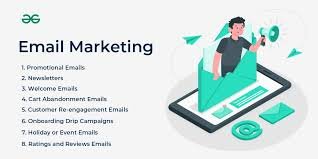
Basic principles of e-mail marketing
E-mail marketing is based on fundamental principles that guide the creation and implementation of effective campaigns to achieve your business objectives. Understanding these basic principles is essential to taking full advantage of this powerful marketing strategy in today’s digital landscape.
To begin with, it’s crucial to build a quality mailing list. A well-maintained list of opt-in contacts – people who have voluntarily chosen to receive your e-mails – is the cornerstone of any successful e-mail marketing campaign.
Next, segmentation of your list is essential to send relevant messages to each segment of your audience. By grouping your subscribers according to criteria such as preferences, purchasing behavior or geographic location, you can personalize your e-mails to meet the specific needs of each group.
Creating engaging content is another key principle of e-mail marketing. Your e-mails should offer added value to your subscribers, whether in the form of useful information, exclusive promotions or entertaining content. This keeps your audience interested and encourages interaction with your e-mails.
Frequency is also an important aspect to consider. Sending e-mails too frequently can lead to list fatigue and unsubscribes, while sending too infrequently can lead to a loss of interest on the part of your audience. Striking the right balance according to your audience’s needs and expectations is essential.
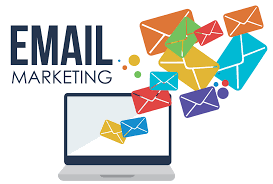
Building an effective mailing list
Building an effective mailing list is a crucial step in any successful e-mail marketing strategy. A quality mailing list is the foundation of your ability to reach and engage your target audience in a meaningful way.
To begin with, it’s essential to entice your website visitors to subscribe to your mailing list. You can do this by placing clear, attractive sign-up forms on your site, offering visitors an incentive such as exclusive content or a special discount in exchange for their e-mail address.
In addition, you can use social networks to promote your mailing list and encourage subscriptions. Regularly post engaging content on your social profiles and invite your subscribers to join your list to receive exclusive updates and special offers.
Attending in-person events, such as trade shows or conferences, can also be an effective way of collecting e-mail addresses. Offer attendees the chance to join your mailing list in exchange for promotional material or useful resources related to your company or industry.
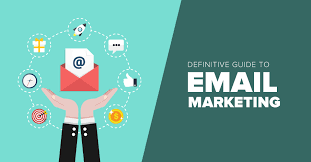
Creating engaging content for your e-mails
Creating engaging content is a crucial aspect of the success of your e-mail marketing campaigns. Emails that captivate and inspire your subscribers are more likely to be opened, read and shared, which can lead to greater customer loyalty and higher conversion rates.
To start with, make sure the subject of your e-mail is catchy and relevant to your target audience. The subject line is the first thing your subscribers see, so it needs to be compelling and pique their interest from the outset.
Next, focus on creating quality content that offers added value to your subscribers. This can take many forms, such as useful tips, exclusive information, special offers or even entertainment. The aim is to provide content that responds to your audience’s needs and interests, strengthening their engagement with your brand.
Use visual elements such as images, videos and graphics to make your content more engaging and stimulating. Visual elements can help break up text and make your e-mail more user-friendly and enjoyable to read.
Don’t forget to include clear, punchy calls to action in your content to encourage subscribers to take a specific action, whether it’s to buy a product, sign up for an event, or share your content with their networks.

E-mail personalization for better engagement
E-mail personalization is an essential element in maximizing audience engagement and strengthening the relationship with your subscribers. By tailoring your messages to each recipient’s preferences, behaviors and interests, you can create more relevant and meaningful experiences that prompt action.
To get started, use the data you have on your subscribers to segment your mailing list into smaller groups. Segmentation can be based on various criteria, such as purchasing behavior, product preferences, geographic location, or even past interactions with your e-mails.
Once you’ve segmented your list, use this information to personalize the content of your e-mails. Use the recipient’s first name in the subject or body of the e-mail to create an immediate, one-to-one connection. In addition, use specific information on the preferences or behaviors of each segment to offer product recommendations, special offers or relevant content.
Don’t forget to adapt the timing of your e-mails to your subscribers’ habits, too. By using data such as time zone or previous open times, you can choose the optimal time to send your messages and maximize the chances of engagement.
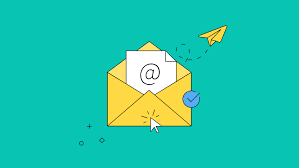
Using tools and software for e-mail marketing
Using the right tools and software is crucial to running effective and efficient e-mail marketing campaigns. These solutions enable you to automate tasks, personalize your messages, and analyze campaign performance to optimize your results.
One of the most fundamental tools for e-mail marketing is an e-mail automation platform. These tools enable you to plan and send mass e-mails, as well as create automated sequences based on specific triggers, such as list sign-up, birthdays, or purchasing behavior.
In addition, mailing list management tools are essential for organizing and segmenting your subscriber database. These tools enable you to collect, store and manage your contacts’ e-mail addresses, as well as create specific segments to personalize your campaigns according to the interests and behaviors of each group.
To optimize your campaigns and track the performance of your e-mails, analysis tools are essential. These tools provide you with valuable data on open rates, click-through rates, conversion rates and other key metrics, enabling you to identify what’s working well and what can be improved.
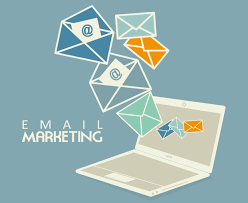
Best practices for e-mail design and layout
The design and layout of your e-mails play a crucial role in the effectiveness of your e-mail marketing campaigns. Well-designed, attractive e-mails can capture your subscribers’ attention, reinforce your message and improve audience engagement.
To start with, make sure your e-mail is clear, concise and well structured. Use headings and subheadings to divide the content into easily digestible sections, and use short paragraphs and bulleted lists to make the text more readable.
When it comes to visual design, keep simplicity and consistency in mind. Use a clean, professional design template, with colors and fonts that reflect your brand. Also make sure your e-mail is optimized for easy reading on all devices, including smartphones and tablets.
The use of images and videos can also make your e-mail more attractive and engaging. However, take care not to overload your e-mail with too much visual content, as this can slow down page loading and make the e-mail less accessible for some recipients.
When it comes to calls to action (CTAs), make sure they’re clear, relevant and easy to spot. Use distinctive CTA buttons with compelling text to prompt subscribers to take action, whether to buy a product, register for an event, or visit your website.
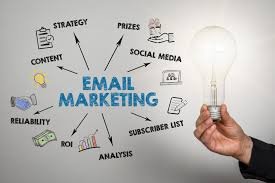
The importance of list segmentation for greater efficiency
List segmentation is an essential practice in any e-mail marketing strategy aimed at optimizing the effectiveness of your campaigns. By grouping your subscribers into specific segments based on different criteria, you can personalize your messages to meet the unique needs, preferences and behaviors of each group.
For starters, list segmentation lets you target your audience more precisely. Rather than sending generic e-mails to your entire list, you can create personalized messages that are more relevant and appealing to each segment of your audience.
By segmenting your list according to criteria such as product preferences, purchasing behavior, or geographic location, you can tailor your messages to better meet the specific needs of each group. This can lead to a significant increase in the open rate, click-through rate and conversion rate of your campaigns.
What’s more, list segmentation enables you to send more targeted and relevant e-mails, which can help reduce unsubscribes and spam complaints. Subscribers are more likely to open and interact with e-mails that meet their specific needs, rather than with generic messages that are irrelevant to them.

Measuring and analyzing the performance of e-mail marketing campaigns
Performance measurement and analysis are crucial steps in any e-mail marketing strategy. These processes enable you to evaluate the effectiveness of your campaigns, identify what’s working well and what can be improved, and optimize your future actions to achieve better results.
To begin with, it’s important to define clear, measurable objectives for your e-mail marketing campaigns. Whether it’s increased sales, lead generation or audience engagement, having precise objectives enables you to measure the performance of your campaigns more effectively.
Next, use the analytics tools integrated into your e-mail marketing platform to track the performance of your campaigns. These tools provide you with valuable data on metrics such as open rate, click-through rate, conversion rate and unsubscribe rate, enabling you to assess the impact of your campaigns.
By analyzing this data, you can identify what’s working well in your campaigns and what can be improved. For example, if you find that certain e-mail subjects have a higher open rate than others, you can use this information to optimize your future e-mail subjects.
In addition, use A/B testing to experiment with different elements of your e-mails, such as subject line, content, or call-to-action, to determine what resonates best with your audience. By comparing the results of each variation, you can refine your strategy and continually improve the performance of your campaigns.
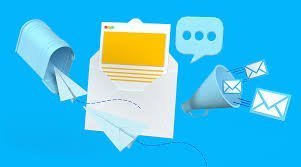
Strategies for increasing open and click rates
Increasing your e-mail open and click-through rates is essential to maximize the effectiveness of your e-mail marketing campaigns. Here are some effective strategies for improving these metrics and increasing audience engagement.
For starters, make sure you use attractive and compelling subject lines. The subject line is the first thing your subscribers see when they receive an e-mail, so it needs to be captivating and enticing to open. Use relevant keywords, create a sense of urgency or curiosity, and keep the subject line concise and clear.
Next, personalize your e-mails as much as possible. Use the recipient’s first name in the subject or body of the e-mail to create an immediate, individual connection. In addition, use specific data on each recipient’s preferences or behaviors to personalize the content of your e-mails and make messages more relevant to each subscriber.
Also use clear, powerful calls to action to encourage subscribers to take action. Use distinctive CTA buttons with compelling text to entice subscribers to click, whether to visit your website, register for an event, or buy a product. Place CTAs strategically in your e-mail, preferably in several places, to maximize the chances of conversion.
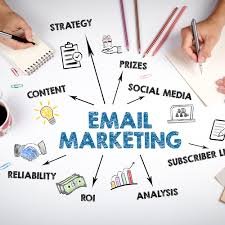
Email deliverability management and spam filter avoidance
Managing e-mail deliverability and avoiding spam filters are essential elements in ensuring that your e-mails reach your subscribers’ inboxes. Here are some important strategies for optimizing the deliverability of your e-mails and avoiding being marked as spam.
First of all, make sure your mailing list is clean and well maintained. Regularly remove invalid e-mail addresses, permanent bounces and inactive subscribers. A clean list helps to maintain a good sender reputation and improve the deliverability of your e-mails.
Next, make sure your e-mail infrastructure is properly configured. Use an authenticated sender domain, such as SPF, DKIM and DMARC, to ensure that your e-mails are authenticated and legitimate. Correctly configuring these parameters helps build trust with e-mail providers and improve the deliverability of your e-mails.
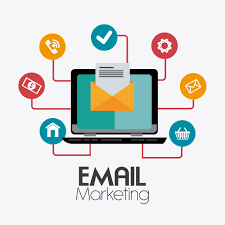
Integrating e-mail marketing with other digital marketing channels
Integrating e-mail marketing with other digital marketing channels is a powerful strategy for boosting the impact of your campaigns and maximizing audience engagement. Here are a few ways to effectively integrate e-mail marketing with other channels for a coherent overall marketing strategy.
First of all, use e-mail marketing to feed your social networks. Include links to your social profiles in your e-mails and encourage your subscribers to interact with your content on these platforms. Also use social networks to promote your special offers or events through sponsored posts and ads.
Then use user-generated content in your e-mail marketing campaigns. Encourage your subscribers to share their experiences with your products or services, and use these testimonials or reviews in your e-mails to reinforce your brand’s credibility. You can also use social networking content in your e-mails, such as images of your customers using your products or tweets mentioning your brand.
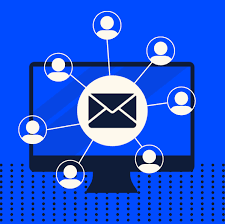
Emerging trends and innovations in e-mail marketing
The field of e-mail marketing is constantly evolving, with the emergence of new trends and innovations that are redefining the way companies communicate with their audience via e-mail. Here are some of the most important trends to watch out for in e-mail marketing.
First of all, advanced personalization is becoming increasingly important in e-mail marketing. Companies are looking to create more personalized experiences for their subscribers, using behavioral and transactional data to tailor e-mail content and offers to each subscriber’s individual interests and preferences.
Secondly, intelligent automation is becoming increasingly widespread in e-mail marketing. Companies are using algorithms and artificial intelligence technologies to automate and optimize their e-mail campaigns, providing content recommendations, personalizing messages, and triggering e-mails based on subscriber behavior.
In addition, interactive e-mails are gaining in popularity in e-mail marketing. Companies are looking to create more engaging and interactive e-mails by incorporating elements such as polls, quizzes, scrolling image galleries, and even submission forms directly into e-mails.
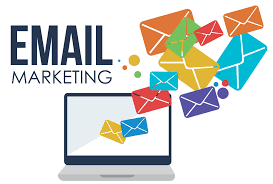
Case studies of successful e-mail marketing campaigns
Case studies of successful e-mail marketing campaigns offer concrete, inspiring examples of effective strategies implemented by companies. Here are a few examples of case studies illustrating e-mail marketing campaigns that have generated significant results.
Case study 1: Increasing sales through personalization
An e-commerce company launched an e-mail marketing campaign to boost sales of its products. Using data on its customers’ purchasing behavior, the company created personalized e-mails with product recommendations based on previous purchases and each customer’s individual preferences. Result: the campaign generated a 30% increase in sales over previous campaigns.
Case study 2: Re-engaging inactive subscribers
A service company launched an e-mail marketing campaign to re-engage its inactive subscribers. By sending personalized e-mails with special offers and incentives to return, the company succeeded in reactivating 20% of its inactive subscribers and increasing the overall engagement of its mailing list.
Case study 3: Improving brand loyalty
A large retail company launched an e-mail marketing campaign focused on engagement and brand loyalty. By sending regular e-mails with informative content, useful tips and exclusive offers to members of its loyalty program, the company succeeded in strengthening brand loyalty and increasing repeat sales by 25% over the course of the year.

Testimonials from satisfied customers who have benefited from successful e-mail marketing campaigns:
Sophie, owner of an online clothing store: « Thanks to a personalized e-mail marketing campaign, I’ve seen a significant increase in sales for my online store. Product recommendations based on previous purchases really encouraged my customers to come back and buy more. I highly recommend this approach to any company looking to boost sales. »
Marc, Marketing Manager of a service company: « We launched a campaign to re-engage inactive subscribers with the help of a targeted e-mail marketing strategy. The results were remarkable: we were able to reactivate many customers who had lost interest, and increase our overall engagement rate. This approach enabled us to revitalize our mailing list and strengthen our relationship with our customers. »
Caroline, Marketing Director of a major retail chain: « Implementing an e-mail marketing strategy focused on customer loyalty has been a real success for our company. By providing our customers with relevant content and exclusive offers, we have been able to strengthen their attachment to our brand and increase their loyalty. Our customers now feel more engaged and connected to our brand, which translates into a significant increase in repeat sales. »
These testimonials demonstrate the positive and measurable impact that well-executed e-mail marketing campaigns can have on a company’s growth and success. By implementing similar strategies, other companies can also achieve impressive results and build customer loyalty.
The story of Claire and her tearoom:
Claire had always dreamed of opening her own tearoom, a cozy place where customers could relax, enjoy delicious homemade pastries and savor a good cup of tea. After years of hard work and saving, she finally realized her dream by opening her little tearoom in a picturesque part of town.
The early days were encouraging, but Claire knew she had to find a way to stand out in a competitive market. So she decided to launch an e-mail marketing campaign to promote her tea room to a wider audience.
Claire carefully designed a series of attractive e-mails highlighting the friendly atmosphere of her tearoom, the quality of her homemade products and special offers for new customers. She also used personalization to address each subscriber directly, including their first name in the e-mails and offering personalized incentives.
The e-mail marketing campaign quickly paid off. The e-mails attracted the attention of new customers, who were seduced by the tearoom’s welcoming atmosphere and the quality of its products. What’s more, the special offers encouraged many customers to return and recommend the tea room to friends and family.
Thanks to the e-mail marketing campaign, Claire’s tearoom has become a fixture in the neighborhood, attracting a loyal clientele and generating positive word-of-mouth. Claire has succeeded in turning her dream into a thriving business, while offering her customers a memorable and delicious experience with every visit.
Conclusion
E-mail marketing remains a powerful and effective tool for companies seeking to promote their products and services, build customer loyalty and stimulate growth. By embracing emerging trends and industry best practices, companies can create e-mail marketing campaigns that captivate their audience, boost engagement and generate measurable results.
Whether using advanced personalization, intelligent automation, interactive e-mail or integrating e-mail marketing with other digital marketing channels, companies have many opportunities to improve their campaigns and maximize their impact.
Case studies of successful e-mail marketing campaigns and testimonials from satisfied customers illustrate the importance of this strategy in today’s digital landscape. By drawing on these inspiring examples and following the practical advice, companies can implement e-mail marketing campaigns that stimulate growth and strengthen their relationship with their customers.
Ultimately, e-mail marketing remains an essential pillar of digital marketing, offering companies an effective platform for communicating with their audience, promoting their brand and achieving their business objectives. By keeping a close eye on industry developments and adapting their strategies accordingly, companies can continue to leverage e-mail marketing to succeed in an ever-changing digital environment.


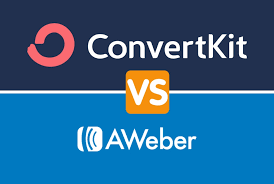

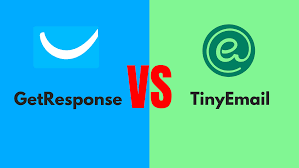
Ping : Sales Tunnel : Essential strategies and tools to maximize your sales in 2024 - Logiciels marketing